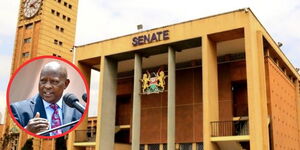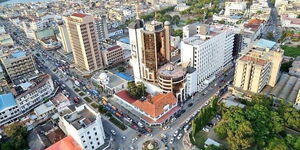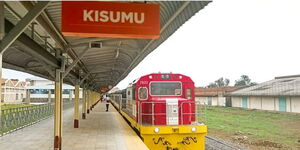Victims of torture at Nyayo House during President Daniel Moi's regime have sued the government over non-compliance.
The suit was filed by the Kenya Human Rights Commission (KHRC), the Law Society of Kenya (LSK), and four survivors: Wachira Waheire, Florence Murage, Joseph Manje, and Ngotho Kariuki.
The petitioners want the chambers currently restricted for public access to be converted into a national monument.
Attorney-General Justin Muturi, Interior Cabinet Secretary Kithure Kindiki and his tourism counterpart Mutua are among those mentioned as respondents in the case.
In their petition, the victims objected to Legal Notice Number 11 of 1991, which restricted the Nyayo House torture chambers from public access.
Petitioners argued that restricting the area from access went against an order issued by the Truth, Justice, and Reconciliation Commission (TJRC), which allowed public access to the chambers.
Petitioners noted that the directive had a one-year implementation timeframe, which has since been contravened.
"Without an expedited process, victims or survivors of the Nyayo Torture Chambers will continue to be deprived of their rights to reparation and restorative justice," the petition states.
According to the victims, there had been previous attempts to destroy the chambers to cover up the heinous acts committed there.
"If the court rules in favour of the suit, the chambers will be accessible to the public for remembrance and education about Kenya's history at the former torture facility," KHRC officials noted.
On February 18, 2003, the chambers were opened for the first time and public access was granted but subsequent efforts to make them continuously accessible hit the rocks.
According to the Human Rights Commission, access to the chambers requires permission from the Nairobi county commissioner and the National Intelligence Service (NIS).
Nyayo House, where the torture chambers were located, was first commissioned in 1983 by Kenya's second president Daniel Moi after 4 years of construction work. Detainees who managed to survive the harrowing experience at the dreaded cells include the Azimio leader Raila Odinga and the politicians, Koigi was Mwere and Gitobu Imanyara.
Turning the torture rooms into a national monument and granting access to the public would signify an act of honour and respect for the survivors and those who died inside the dreaded chambers.
On the other hand, the government has relentlessly objected to the reopening of the rooms hinging its reason on a dark past where innocent Kenyans were illegally detained and tortured.












